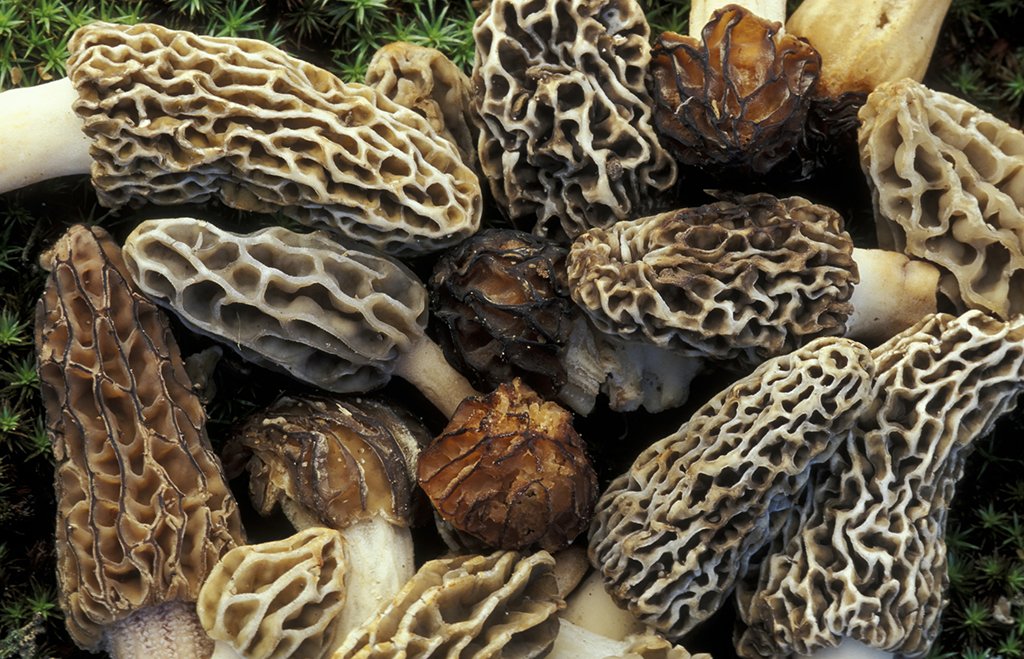A food poisoning outbreak that resulted in two deaths and 51 illnesses has underscored the limited understanding of morel mushrooms and the risks associated with preparing this popular and expensive delicacy.
The FDA launched an investigation into morel mushrooms following the severe illness outbreak linked to Dave’s Sushi in Bozeman, Montana, in late March and April.
The investigation identified undercooked or raw morels as the likely culprit, prompting the agency to issue its inaugural guidelines on preparing these mushrooms.
“The toxins in morel mushrooms that may cause illness are not fully understood; however, employing proper preparation methods such as cooking can help reduce toxin levels,” stated the FDA guidance.
Despite these precautions, a residual risk remains, according to the FDA: “While properly preparing and cooking morel mushrooms can reduce the risk of illness, there is no guarantee of safety even with cooking steps taken before consumption.”
Jon Ebelt, spokesperson for Montana’s health department, noted the scarcity of public health information and medical literature on morels.
Additionally, samples of the morels collected from Dave’s Sushi did not detect any specific toxins, pathogens, pesticides, or volatile or nonvolatile organic compounds in the mushrooms.
Aaron Parker, owner of Dave’s Sushi, described morels as a “boutique item.”
During their season, typically in spring and fall, morels cost him around $40 per pound, while out-of-season prices soar to nearly $80 per pound.
Many respected recipe books recommend sautéing morels to preserve their coveted earthy flavor.
At Dave’s Sushi, Parker explained that a marinade, sometimes followed by boiling, was applied to raw mushrooms before serving.
After conducting his own investigation, Parker determined that boiling the mushrooms for 10 to 30 minutes is the safest method of preparation.
Parker shared that he reached out to chefs across the country and discovered that many, like him, were unaware of the potential toxicity of morels.
“They had no idea that morel mushrooms carried this kind of inherent risk regardless of how they were prepared,” Parker said.
According to the FDA’s Food Code, of the over 5,000 fleshy mushroom species naturally growing in North America, most have not been tested for toxicity.
Among those that have, 15 species are lethal, 60 are toxic whether raw or cooked—including “false” morels resembling edible morels—and at least 40 are harmful if eaten raw but safer when cooked.

The North American Mycological Association, a national nonprofit composed of mushroom experts, documented 1,641 cases of mushroom poisonings and 17 deaths from 1985 to 2006. Of these, 129 poisonings were linked to morels, though no fatalities were reported.
Marian Maxwell, outreach chairperson for the Puget Sound Mycological Society in Seattle, explained that cooking breaks down chitin in mushrooms—a compound akin to the exoskeletons of shellfish—and helps neutralize toxins.
Maxwell noted that morels may naturally contain a type of hydrazine, a chemical found in pesticides or rocket fuel known to cause cancer, which affects individuals differently.
She clarified that cooking eliminates most of the hydrazine, yet some people may still react despite cooking.
Heather Hallen-Adams, chair of the toxicology committee at the North American Mycological Association, indicated that while hydrazine has been identified in false morels, its presence in true morels—the type used at Dave’s Sushi—is less clear-cut.
Food poisoning incidents caused by mushrooms in restaurant settings are rare—the Montana outbreak is believed to be one of the first in the U.S. linked to morels—but they have sporadically occurred internationally.
In 2019, a morel-related food poisoning outbreak at a Michelin-starred restaurant in Spain sickened about 30 patrons. Although one woman who consumed morels died, her death was attributed to natural causes.
In another incident in Vancouver, British Columbia, raw morels served on a pasta salad poisoned 77 consumers, though none died.
Before the issuance of new guidelines, the FDA’s Food Code directed states that serving wild mushrooms requires approval from a regulatory authority.
The Food Code prohibits the sale of wild-picked mushrooms in restaurants or other food establishments unless authorized, though cultivated wild mushrooms can be sold if overseen by a regulatory agency, as was the case with the morels at Dave’s Sushi.
State regulations vary, as highlighted in a 2021 study by the Georgia Department of Public Health included in the Association of Food and Drug Officials’ regulatory guidelines.
For example, Montana and several other states permit restaurants to sell wild mushrooms from licensed sellers, while 17 other states allow the sale of wild mushrooms identified by state-credentialed experts.
The study recognized a “guidance document” as the “most critical advancement” due to varying regulations and the demand for wild mushrooms.
Hallen-Adams noted that mushroom experts understand that raw morels can be toxic, but this knowledge isn’t widespread among chefs.
Regarding the Dave’s Sushi case, Hallen-Adams emphasized that safety information did not reach those who needed it. “Labeling could address this issue,” she suggested.
There hasn’t been enough emphasis on ensuring consumers know how to properly prepare mushrooms, Hallen-Adams added, emphasizing the need for proactive measures moving forward.
She mentioned that the North American Mycological Association plans to update its website with prominent information on the importance of cooking mushrooms, specifically highlighting morels.
